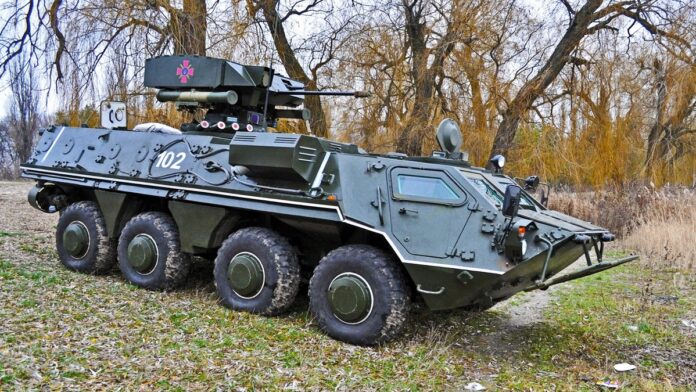Article Contents
Background on BTR-4
BTR-4 is an armored personnel carrier developed by the Ukrainian state-owned defense company KMDB. KMDB was the best tank engineering facility of the Soviet Union. However, just like all other big soviet companies, it generally failed to find it’s place in new capitalist world.
Development of the BTR4 began in the early 2000s and it was first publicly displayed in 2006. during arms expo “Aviasvit-21”. It was designed to replace the Soviet-era BTR-80 APCs in service with the Ukrainian military. The idea was to make an APC with increased firepower and increased survivability of the crew and infantry.
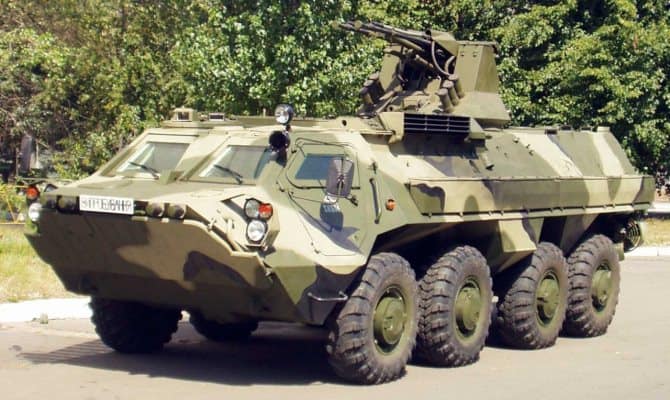
In 2000s it was very hard to push any new developments into Ukrainian Army. All the way until 2014, Ukrainian Army was as outdated and corrupt as it gets. Weapons, vehicles and even personal equipment were leftovers from the Soviet Army. This was not a good situation, as this stuff was very outdated.
For that reason, the KMBD plant was actively working to find export clients for it’s new product. One of the most famous foreign powers, who used BTR-4 was the Republic of Iraq, but we will get to it later.
In 2008 this APC|IFV was qualified ready for mass production by the Ukrainian Ministry of Defense. In 2012 the vehicle was officially adopted by the Armed Forces of Ukrainian
Armor and armament
The BTR-4 has a number of significant improvements over its predecessors. Unlike Ukrainian BTR-3 or Russian BTR-82, the BTR-4 is a next-generation vehicle. The only resemblance it has with the Soviet family of wheeled vehicles is the overall shape.
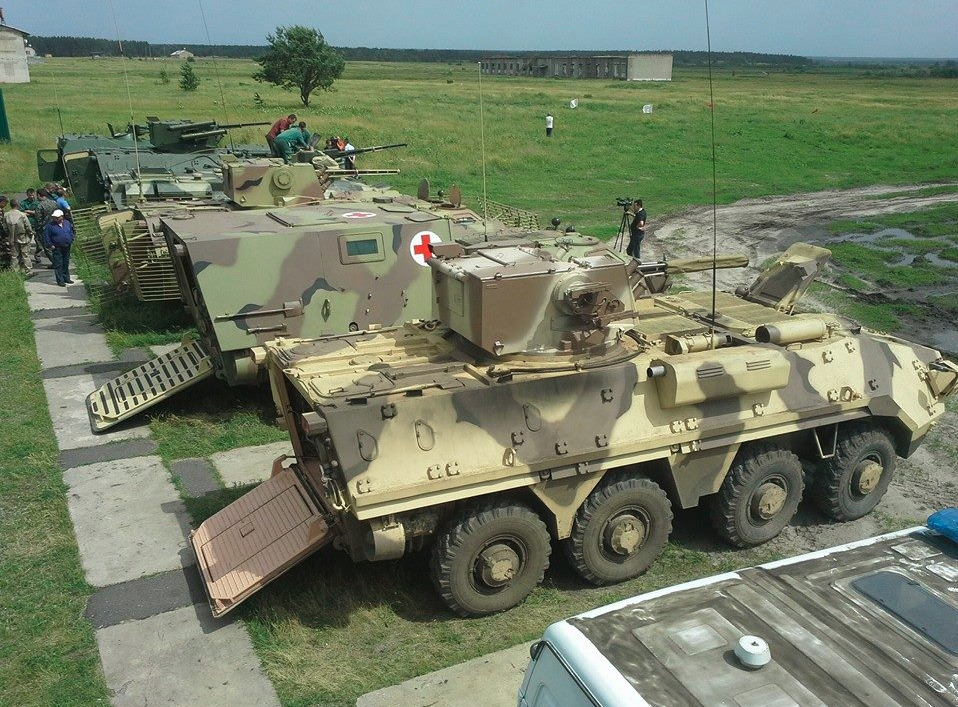
One of the major improvements was the engine compartment. Soviet BTRs are notorious for how bad their engines were. In fact, both BTR-60 and BTR-70 had two engines, because the Soviet industrial complex was unable to come up with a powerful enough engine to work on such a vehicle.
The engine of choice for BTR-4 was 3TD-3 diesel engine. It was developed in Kharkiv in 1994 and was used to modernize BTR-70 to the modern standards. This engine was a huge leap forwards and is generally good even for today’s standards. The main problem with it seems to be the noise it makes. Potentially, the next generation 3TD-4 diesel engine will have this problem solved.
Another major improvement was new armament. Soviet BTRs were rightfully considered as armored personnel carriers, since the armament they had was insufficient for any reasonable support. Well, BTR4 took it to the extreme.
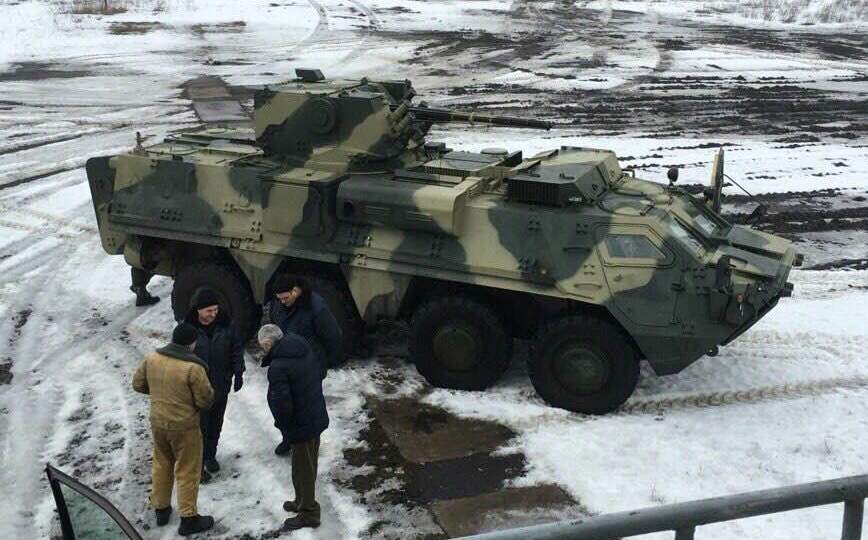
There was a number of proposed armed modules for the vehicle, but the important part was that they were all inhabitable. This meant that the operator now had much higher survival chances.
The main adopted module which was produced in big numbers was BM-7 “Sail”. It has a lot of weapons:
– 30-mm auto-cannon KBA-2 or ZTM-1
– ATGM “Barrier”
– KM-7.62 coaxial machine gun
– KBA-117 Automatic Grenade Launcher (can be installed per request)
As we see – that’s a lot of firepower.
To be more precise, KBA-2 and ZTM-1 are both copies of the Soviet-designed 2A72 auto-cannon. A very powerful 30mm weapon, capable of damaging tanks, destroying light vehicles and annihilating infantry. “Barrier” ATGM is another powerful Ukrainian weapon. It’s infantry version called “Stugna-P” is produced by famous KB “Luch” in Kyiv. This weapon has destroyed dozens, if not hundreds of Russian armored vehicles during the ongoing war.
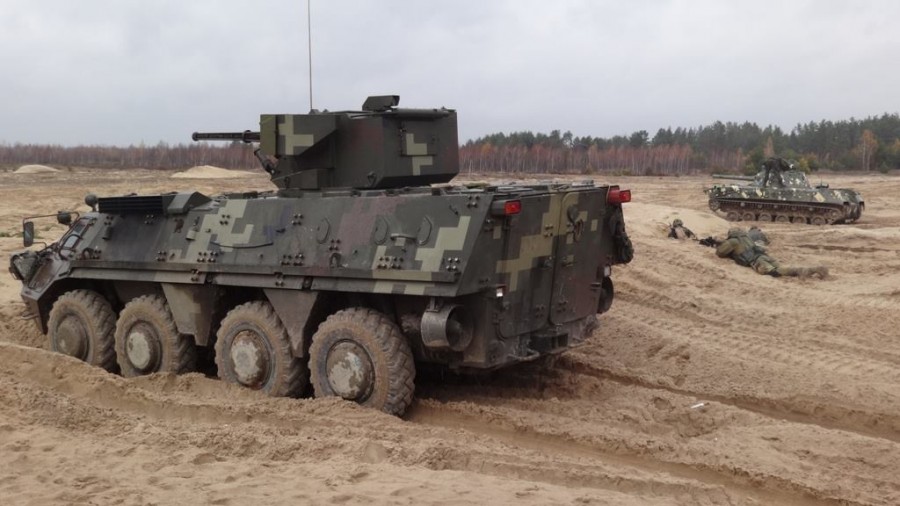
The armor protection of the BTR-4 is poor. It only ranks as Level 2 under STANAG 4569. This means, that the vehicle is only capable to stop rifle balls and can give some protection against 12.7mm and 14.5mm rounds, when fired at the frontal part. Anything above this will go through the armor and damage or destroy the BTR.
The only reason for this flaw is the completely outdated requirement for the vehicle to have an amphibious capability. Unfortunately, the Defense officials are very slow on accepting new concepts. So this ability migrated directly from the Soviet predecessor. To stay afloat, the vehicle needs to be light, hence the poor armor.
On a positive note, the newest model of the Ukrainian-made BTR (which is likely to receive an index of BTR-5 or BTR-8) will have V-shaped bottom and all round armor, capable of holding 30mm projectiles.
The role in the brigade structure
The initial idea was to rearm all Ukrainian motorized and mechanized brigades with this new BTR-4. By the end of 2000s it was a really good idea, since the BTR-70 and BTR-80 were almost useless at the modern battlefield.
To achieve this goal, somewhat around 1000 of BTR-4 had to be produced. This would be enough to modernize most if not all infantry battalions that the Army of Ukraine had prior to 2014.
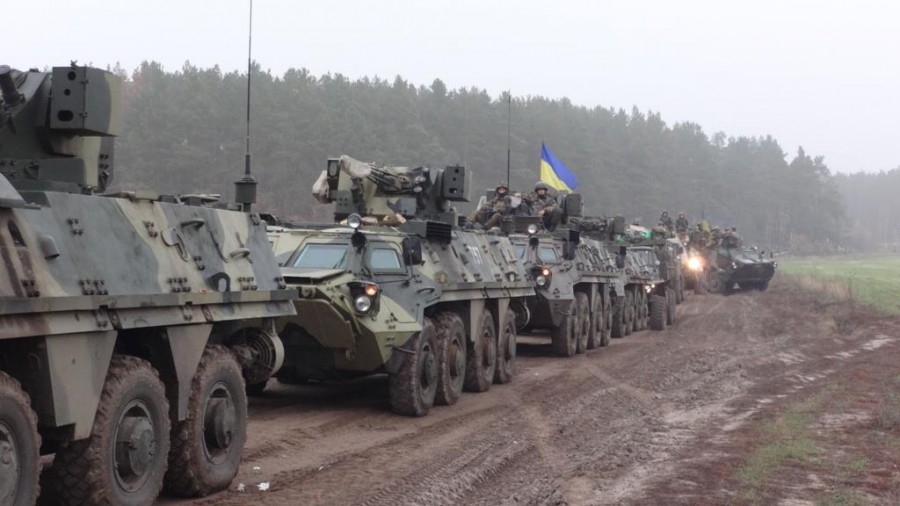
As it usually turns out, the production capacity of the modern vehicles happened to be very insufficient. The plant was able to produce somewhat between 50 to 70 vehicles per year, but could not keep up even at these numbers. The export contracts for the BTR4 were also adding some stress to the production line.
Anyhow, just before the full scale invasion of Ukraine by the Russian forces in February 2022, it seemed that Ukraine had around 150 to 200 of these vehicles. Most of them were in famous 92nd Mechanized Brigade and infamous 25th Airborne Brigade. A big chunk was also in the National Guard units.
Usage during wartime
BTR4 was used in a number of conflict, which makes it one of the most used and tested modern Infantry Fighting Vehicles. Apart from the obvious, the BTR-4 was used in Iraq by the governmental Iraq Armed Forces.

The initial 2009 contract with Iraq was for 420 vehicles, yet only around 130 vehicles were delivered. In 2013, the Iraqi government has started investigation, claiming that the vehicles were not of a decent quality. Their main claim was that the hulls are cracked. Some of the BTR4s were returned back to Ukraine and later used during the conflict on Donbass. There were no claims about the hull, which makes all this Iraqi story somewhat questionable and suspicious.
Apart from that, 10 vehicles were purchased by Nigeria. They are using it fighting against the ISIS rebels. So far the loss of one BTR-4 is documented, the Islamic State fighters managed to capture the vehicle from the Nigerian forces.
And of course it did have to take a fare share of fighting on Donbass. Since the very first Battle for Slovyansk, which took place in May 2014, the BTR4 was used extensively by the Ukrainian forces. It was used by most of the branches – Airborne, Infantry and National Guard. Since the big invasion in 2022 these vehicles were also used, however, due to scale of events, a big chunk of them was lost.

According to Oryx, 50 BTR-4 were destroyed and around 20 captured by the russian forces. However, as of February 2023, some of these BTR-4 are still fighting on the Eastern Front, meaning that either not all of pre-war stocks were lost or that new ones are being produced as we speak.
Combat footage from BTR4
Here is a great POV of a BTR-4 operator fighting in Mariupol. First he badly damages a T-72 tank (which is very possible using 30mm ammunition) and then annihilates a Russian BMP with some infantry around it.
Another famous footage from Mariupol. You can clearly see how infantry is supported by the BTR-4, which, in turn, shoots at T-72 with what seems to be ATGM rockets.
BTR-4 shoots enemy infantry from point blank. Spring in Mariupol vibes hard.
An old footage from 2014 – the BTR-4 present here is from the Iraqi contract as it is painted in the desert camouflage. Similar or same to the one which can be seen on the photo above.
Summary
The BTR-4 proved to be a combat ready, well armed and overall very capable vehicle. Good engine and multipurpose fighting module make this vehicle all rounded for multitude of tasks. It definitely lacks heavier armor, which became especially obvious since the invasion of 24/02. A lot of these vehicles could survive 14.5mm and 30mm fire if they had better protection.
Another great thing about this vehicle is it’s price. From open source, it seems that it costs under one million US dollars, which is way below the average price for a modern IFV. This could have been a great war-time vehicle, when big numbers are required.


